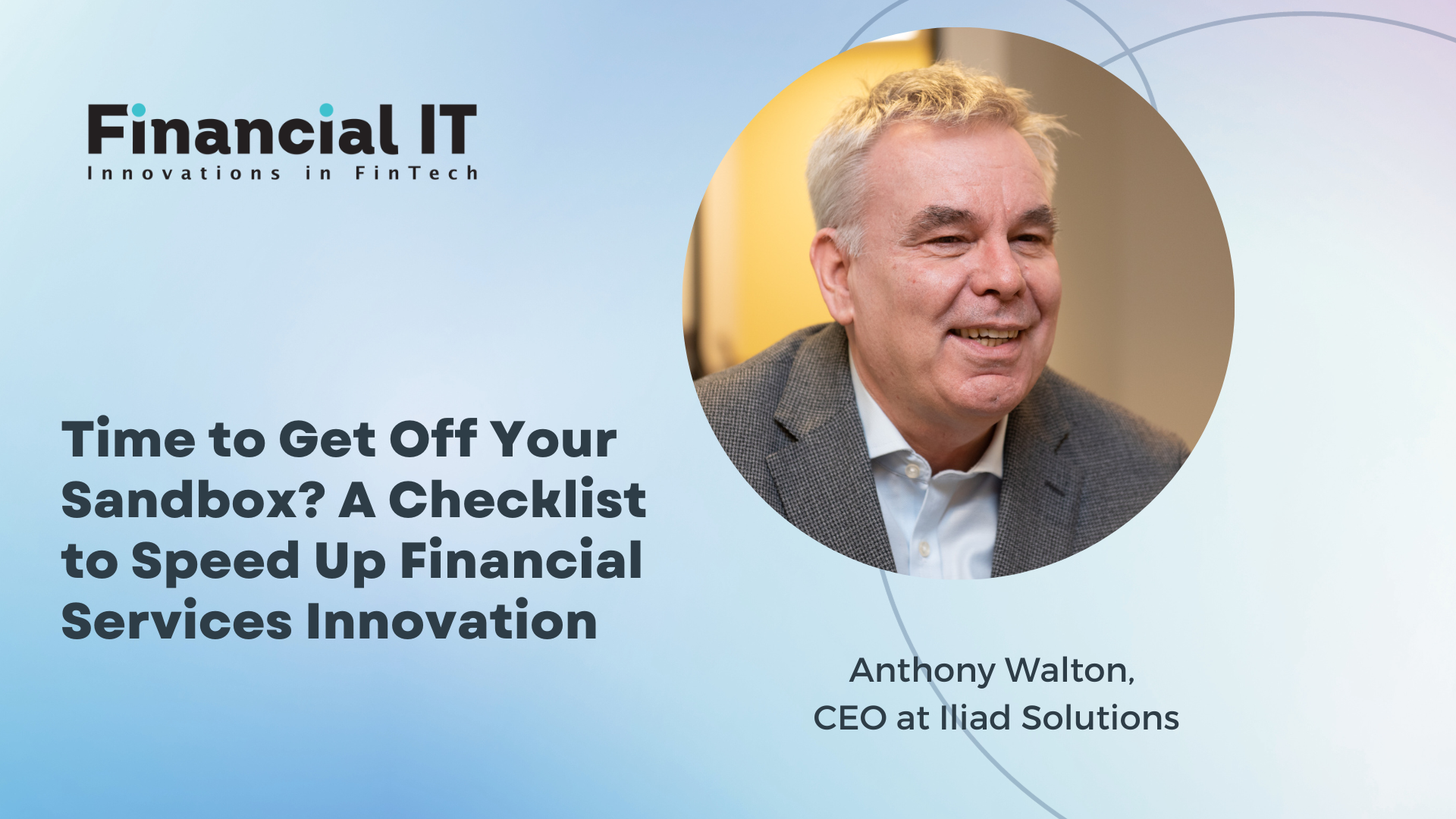Time to Get Off Your Sandbox? A Checklist to Speed Up Financial Services Innovation

- Anthony Walton, CEO at Iliad Solutions
- 10.10.2023 12:00 pm #innovation #finance
Steering an innovative financial services product from a concept to a living, breathing thing that people use in their everyday lives can take an incredibly long time. And it tends to be the rule that the larger the institution, the longer the process.
For those of us who are steeped in technology and work in organisations that are culturally agile, this can be incredibly frustrating.
Yet it’s a reality that we understand and accept. There are no corners that can be safely cut in financial services. When banks or their products fail, people and businesses suffer.
Testing testing: an important tool in a complex process
Indeed, to prevent catastrophic banking problems, innovators must possess a comprehensive toolkit, inside which is the all-important sandbox.
Nowadays, financial institutions have at their disposal a plethora of dependable third-party sandboxes where products and services can be developed.
From a pure technology perspective, these tools enable financial institutions to build minimum viable products, such as payment cards or embedded finance solutions, within weeks if not days in some cases.
But that doesn’t automatically translate into an ability to launch quickly, or more importantly take care of the huge list of tasks involved in bringing a financial services innovation into the world.
Whisper it, but sandboxes do have their limitations.
Life outside the sandbox: a checklist to strengthen your chances of success
To help financial institutions understand what those constraints are, I’ve produced this 13-point checklist of tasks you will need to complete in addition to the sandbox build:
Perform an impact assessment of a product to understand what happens if it breaks or its performance stalls.
Map how the product is going to work and how it will connect to the wider world, for example with HTTPS or MQ.
Agree on the certification needed to confirm your organisation’s identity credentials on payment networks.
Agree on what information you need to collect in order to populate the fields in new messages.
Gain a full picture of any encryption or tokenisation issues you might encounter.
Understand all regulatory checks needed to comply with anti-money laundering and know-your-customer rules.
Design a process for catering for replies from the payment networks and verifying whether the fields in the reply are correct.
Decide whether to cater for every result code that a card scheme might generate.
Decide how you will handle messages in terms of processing information, sending it to a platform’s backend, updating a ledger and maintaining an audit trail.
Decide how you will cater for duplicates and timeouts.
Develop a process for measuring volumes if you’re charged a fee for a transaction.
Understand whether you need to collate additional clearing.
Agree on how transactions are to be represented in your backend systems and how they are communicated to customers on the front end.
A testing partner who understands the challenges facing financial institutions
This list is based on Iliad Solutions’ experience, which has been built up over years of working with some of the most respected and largest banking businesses in the world.
We understand why, in an age of fintech innovation, it’s easy to be baffled by the time it takes some parts of the financial services world to deliver modern products.
But the reality is that there is so much more to digitalisation than meets the eye. We need to think beyond the minimum viable product and beware ‘single API’ simplifications.
Banks and financial institutions are spending billions of dollars a year on technology. Yet sometimes no amount of money can magic away challenges around organisational complexity and talent availability.
A sandbox will help you test within a third party’s often very limited parameters. But this is usually just one small but significant step within what can be a detailed sequence of events and processes.
Hopefully the Iliad Solutions checklist gives an insight into that sequence.



















